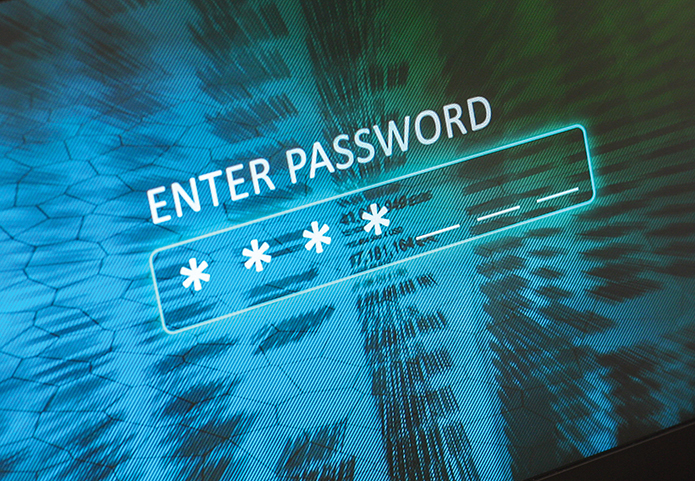
By Alex Kim, CFP®, MBA, CPA
Identity theft is on the rise during the COVID-19 pandemic, according to IDentity USA, a provider of identity monitoring, protection and recovery. Experts predict 1 in 4 people in the United States will be victims of this growing crime trend as more people work from home.
Cyber criminals hope to use coronavirus-related anxiety to take advantage of unsuspecting individuals.
 For those already facing financial hardship, having your identity stolen can be even more disheartening. Telltale signs of a stolen identity include:
For those already facing financial hardship, having your identity stolen can be even more disheartening. Telltale signs of a stolen identity include:
- Debt collectors calling about debts that aren’t yours
- Medical providers billing for services you didn’t use
- Unexplained withdrawals from your bank account
- Receiving bills for accounts you know nothing about
- Being denied credit and not understanding why
If you suspect that you’re a victim of identity theft, there are 10 things you should do immediately:
#1: Lock down the problem account. Unauthorized charges on a financial account are often the first red flag that identity theft might have occurred. You might be contacted by your bank about unusual charges or see them on your statement. In that case, the first step is to contact the financial institution, dispute the charges, and ask to lock down or close the account.
#2: Scan credit card and bank statements for other unauthorized charges. Review all your accounts and old statements for charges you don’t recognize. Remember to review dormant or infrequently used accounts as well. Call the financial institution to alert them about unknown charges and request the account be locked down or closed.
#3: Review your credit reports for “mystery” accounts. Request copies of your credit report from all three major reporting agencies — Experian, Equifax and TransUnion — and look for accounts you might not recognize. Legally, you are entitled to at least one free credit report annually from each agency. The official site to request them is AnnualCreditReport.com.
#4: File a report with the Federal Trade Commission. Create a paper trail to document the theft. Start by filing a report with the Federal Trade Commission at www.identitytheft.gov. You’ll receive a recovery plan and even prefilled letters and forms that can be used to file police reports and dispute fraudulent charges.

#5: Contact your local police department. In addition to filing a report with federal agencies, you should also contact your local police department; your report could help them track down someone who is stealing information locally, but local police might have no recourse if your identity was stolen by criminals online or overseas.
#6: Sign up for a credit monitoring service. If your information was accessed in a data breach, you might be offered complimentary credit monitoring, or you can sign up for a reputable one yourself. These services watch credit reports for suspicious activity and send alerts whenever an account is opened.
#7: Place a fraud alert on your credit reports. Contact the credit bureaus and request a fraud alert be placed on your account. Initially, a fraud alert lasts 90 days to notify any institution that pulls your credit report that your identity might be compromised.
#8: Open new credit card and financial accounts. Identity theft victims should talk to financial institutions to determine how best to avoid further losses. This will involve closing and reopening accounts, even ones that haven’t been compromised. It can be a tedious process, but a necessary one to keep a thief from gaining future control of your money.
#9: Adjust your account settings. Identity theft might involve a single incident or it can be an ongoing issue. Once your personal information is compromised, remain vigilant. Regularly update passwords to online accounts, delete personal information from public profiles on social media and other sites, and check with your financial institution about security measures it offers.
#10: Consider a credit freeze. For added protection, you can initiate a credit freeze which will limit access to your credit report to companies where you already have a credit relationship but block the opening of new accounts. While a credit freeze prevents others from opening accounts in your name, it might also make it difficult for you to receive approval for loans or credit cards.
Additional resources for victims of identity theft are available at www.IdentityTheft.gov, the federal government’s one-stop resource for identity theft and the Consumer Financial Protection Bureau, a U.S. government agency, that provides information on how to dispute an error on your credit report.
Protect your information: 4 critical steps
Finally, it is critical to safeguard your personal information at all times, whether it is on paper, online, or on electronic devices. According to the Federal Trade Commission, there are four important practices to protect your information:
#1: Know who you share information with
#2: Store and dispose of your personal information securely, especially your Social Security number
#3: Ask questions before deciding to share your personal information
#4: Maintain appropriate security on your computers and other electronic devices that house personal information.
Heightened awareness and protecting your personal information can make you less of a target for identity thieves and cyber criminals.
Alex Kim, CFP®, MBA, CPA is a Certified Financial Planner™who brings more than 18 years of direct experience in the financial planning field, and altogether more than 25 years in the financial services industry. His expertise is in helping people better manage their personal financial goals.
He holds the CFP® certification, along with a CPA, and received his BA in Accounting from Pace University and his MBA from Columbia University.


